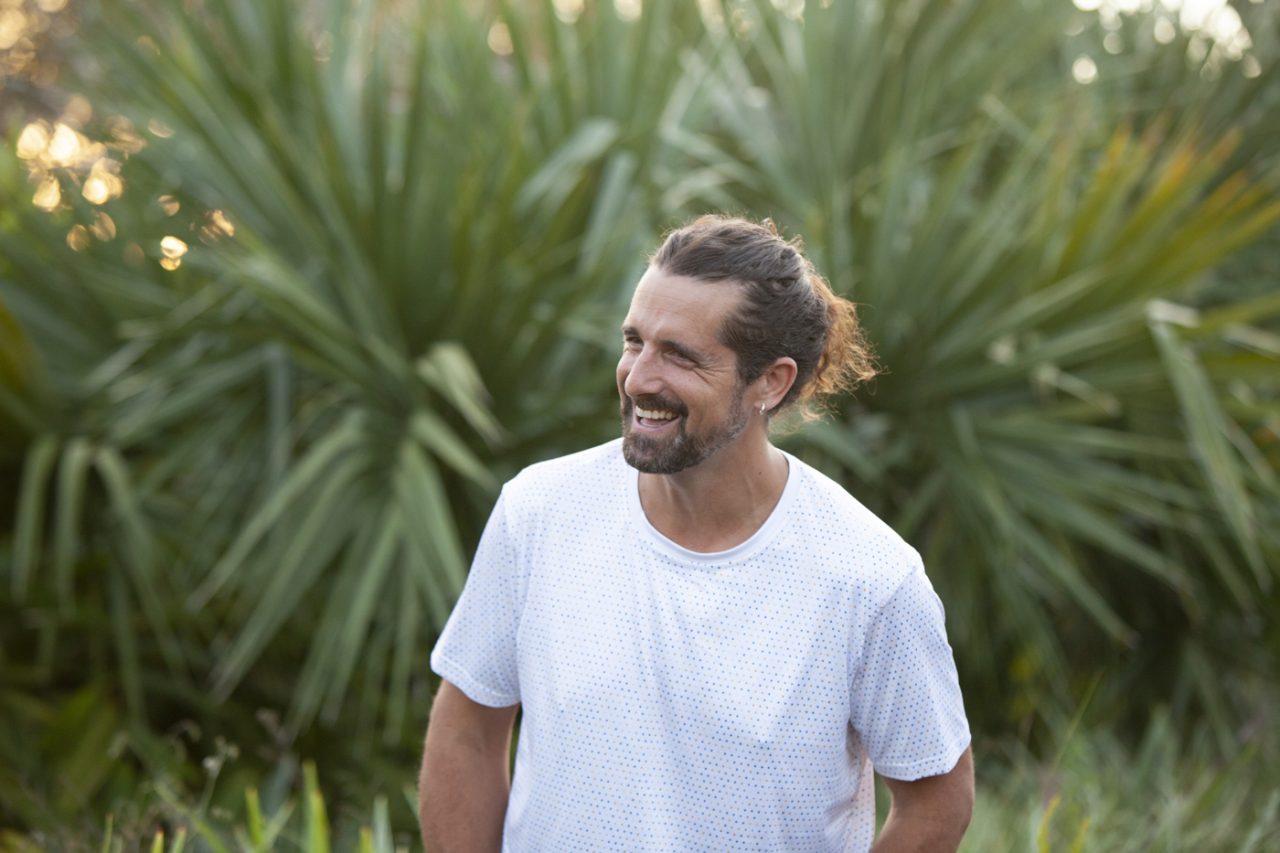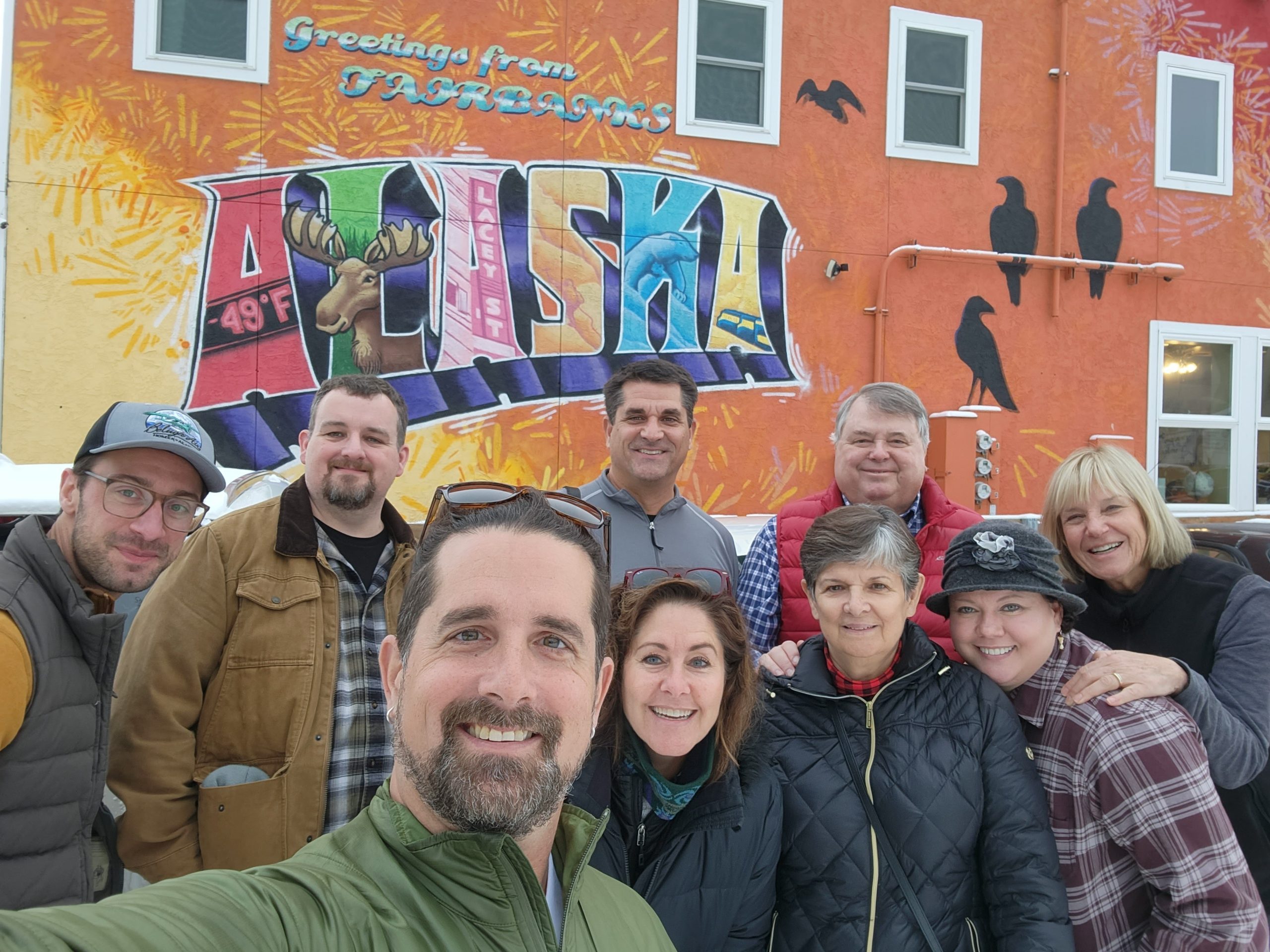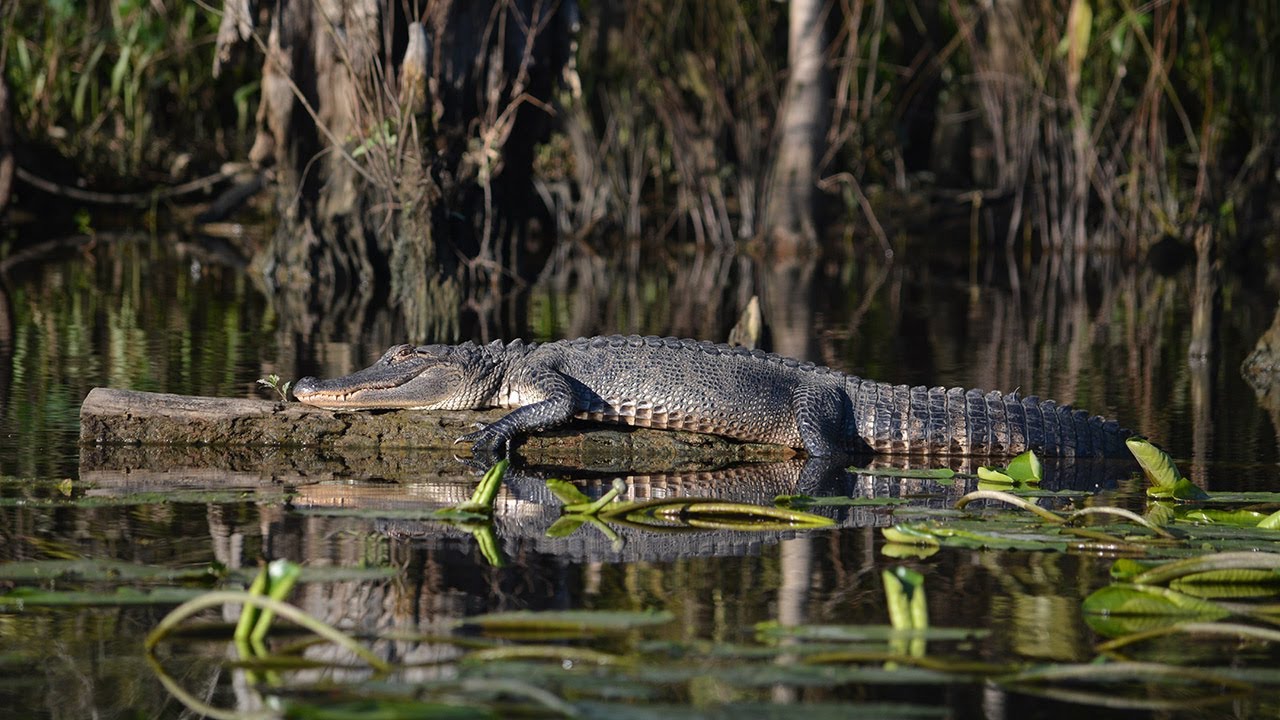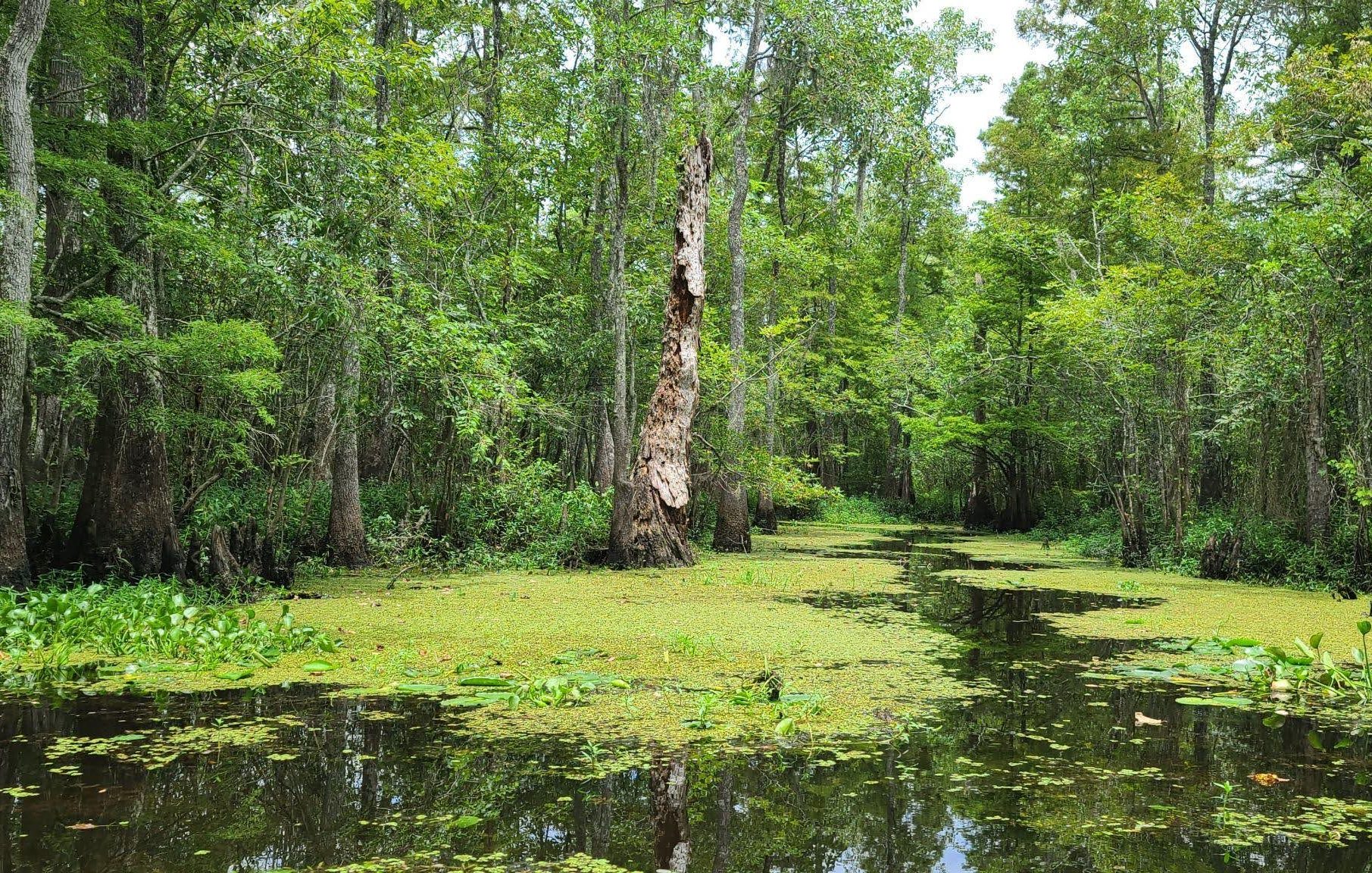What is our Louisiana: Gators & Gumbo Adventure?
Our Louisiana: Gators & Gumbo Adventure is the chance to explore Louisiana’s incredible culture and nature with a local guide. Incorporating wildlife, music, food, and history, this tour is the opportunity to see Louisiana like a local and have authentic encounters unlike any other.
At Gondwana Ecotours, one of the tenets of our sustainable tourism ethos is to work with local guides and vendors, to give our guests an authentic experience of the places we visit. To that end, there is someone special that we’d like to introduce you to; Gondwana guide, John Stewart.
Get to Know John
Originally from Mississippi, John grew up immersed in the unique musical and cultural traditions of the Deep South. Fundamentally, John says that he identifies as a drummer and a guide, and considers both to be art forms in which a person can strive to achieve mastery. He holds a master’s degree in Organizational Leadership and has focused his attention on ecology and world wisdom traditions.
Before joining Gondwana Ecotours as a guide, John worked as a professional drummer and an educator in Portland, Oregon, and New Orleans. He now lives and guides mainly between subtropical Louisiana and subarctic Alaska.
John is particularly fascinated by the myriad of ways that the realms of music, human culture, and the natural world influence each other, particularly in the context of his beloved Louisiana. He works at the intersection of his passion for music, culture, power, embodiment, and stewardship.

Photo of John, taken by Max Trembly
What are John’s connections to Louisiana?
John’s personal connections to New Orleans and Louisiana run deep, specifically to eight generations ago on his mother’s side. Much of John’s extended family has always lived in the New Orleans area.
He credits the city for influencing him to become a drummer during the first part of his career. John says that New Orleans’s rhythm permeates every aspect of life for its citizens: the dialect, the cuisine, and the style of music.
“New Orleans is so musical, the New Orleans beat, and rhythm has influenced the way I play music.” – John
John also feels that he became socially-minded because of his childhood spent amongst diverse communities in the Deep South. Growing up in a place like Louisiana, with such a deep history, means witnessing the intersections of highs and lows, darkness and light, and beauty and tragedy. This shaped John’s values, priorities, and the way he sees the world.

John Stewart guiding guests during our Alaska: Northern Lights Adventure
What does the Louisiana: Gators & Gumbo Adventure mean to John?
To John, the Louisiana: Gators & Gumbo Adventure is about telling stories, and he feels that what we experience on this tour is the deepest and truest story he can tell. That’s why John says that the Louisiana: Gators & Gumbo Adventure, and guiding in Louisiana, feels like the culmination of his personal story and lived experience.
When guiding in Louisiana, John says he shows people the intricately woven tapestry of the place; a blend of the human and the natural world.
John says that a tour of Louisiana is not just a feast for the senses, but a veritable buffet. It’s a chance to blend elements of food, music, history, architecture, and wildlife for an immersive and educational adventure.
The Story of New Orleans
John tells the long and winding story of New Orleans on the Louisiana: Gators & Gumbo Adventure. A common thread throughout this tale is that this area has always been a melting pot — a place of fusion between habitats, peoples, languages, and cultures.
The land mass that New Orleans sits on was formed by silt that the Mississippi River deposited over centuries, which eventually became the delta region. The name “New Orleans” was given when the French landed in 1718. The period of French rule was followed by an era of Spanish control, before transitioning back to French. The Louisiana Purchase in 1803 marked the acquisition of the territory by the United States from the French First Republic.
During the 19th century, New Orleans was the largest port in the southern United States. Most of the nation’s cotton was exported from here, as well as other agricultural products being sent to Western Europe.
Before the French landings, this area had been multicultural and multilingual for millennia, inhabited by Native Americans for over 1300 years. The area is rich in natural resources, so people from all over would travel there to hunt, fish, seek refuge, and trade. One of the original names for the New Orleans area was Bulbancha which translates to “place of many tongues” in Choctaw, a name which is still fitting for a place with such a rich diversity of cultures.
The multilingual and multicultural traditions of the region still persevere today. New Orleans’ unique, rich heritage includes traditions like street parades, not unlike those in the Caribbean and Brazil, as well as an array of community festivals and social rituals. New Orleans remains a major destination for live music, sporting events, and annual Mardi Gras celebrations.
What makes the “Louisiana: Gators & Gumbo Adventure” special?
John thinks that the triumph of this tour is down to the people and the human culture of Louisiana, and uncovering how it intertwines so deeply with the natural world. As is encapsulated by part of its name, “Gators and Gumbo”, this tour is all about the blend of nature and the human world.
This is a powerful, resource-rich landscape — it is no wonder that humans have been drawn to this area for thousands of years. Lying in the Mississippi Delta, it is only fitting that New Orleans has a water-based culture, and taking to the water is also a great way to experience the wildlife. The subtropical rainforests in the swamps of New Orleans are home to an extraordinary array of wildlife. Paddling through the wetlands and waterways gives you the opportunity to encounter amphibians, reptiles like American Alligators, and incredible birdlife such as Roseate Spoonbills, Great Blue Herons, and Barred Owls.

John talks about New Orleans being an ‘ecotone’ in every sense of the word. The scientific definition of an ecotone is a region of transition, where two discrete biological communities come together. One of the features of an ecotone is a spike in biodiversity and natural innovation. In New Orleans, the ecosystems that meet are saltwater and freshwater. It is also a coastal area, where land and sea come together.
John feels that the idea of the New Orleans ecotone can also be applied to the human cultures that meet here, in a place where Caribbean culture meets southern U.S. culture. It has been said that New Orleans is the “northernmost Caribbean city” while also being part of the deep South. In an ecotone, two forces work in tandem to create a biologically, and in this instance, a culturally unique place that is ever-changing.
John also highlights the word ecotone for its dual meaning. Ever connected to his musical roots, John picks out the “tone” in ecotone and applies it to both the sound of the city and the rich, meaningful music that is created there, and also the natural sounds of the swamp, and perhaps how the latter may have influenced the former.
Louisiana has a singular way of life in all aspects of human culture: music, arts, festivals, literary history, and architecture. The human-built environment is part of the spectacular natural landscape, and, in turn, the natural landscape influences the human-built environment. This tour explores both cityscapes and landscapes — John says it is an insight into the wildlife and the “wild-life” of southern Louisiana.
If you want to experience the incredible confluence of cultures and habitats in Louisiana, you can learn more about the Louisiana tour and download the brochure here.


